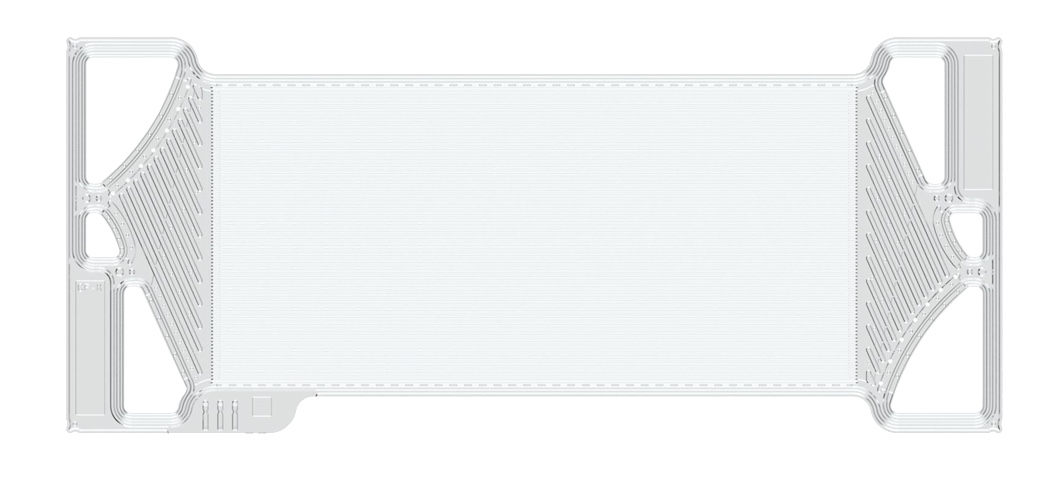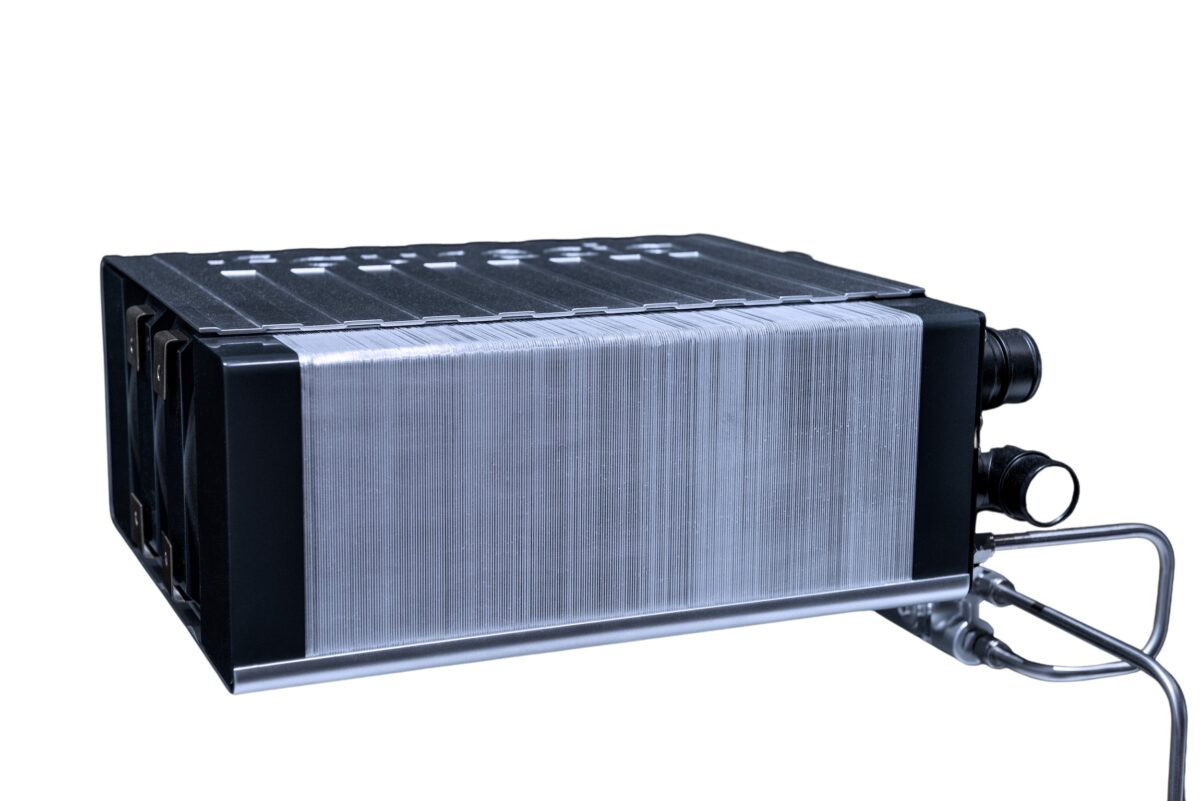- What are fuel cell bipolar plates?
- What is the main function of fuel cell plates in a stack?
- What type of plates are used in fuel cell stacks?
- Which materials are used for fuel cell bipolar plates?
- Please also see the educational video on bipolar plate forming
- What are the key performance criteria of bipolar plates?
- How do metal bipolar plates compare with carbon bipolar plates?
- What are different design principles of the channels?
Browse fuel cell bipolar plates from leading suppliers on our marketplace!
What are fuel cell bipolar plates?
Bipolar Plates are a key component in a fuel cell stack. They are made of graphite or metal and separate each individual cell. A bipolar plate is a very flat component with filigree channels that are applied to the surface of the plate. In today’s stacks, a bipolar plate consists of two individual plates (anode and cathode) that are firmly connected to one another. Hydrogen is distributed in the stack on the anode, oxygen and the end product water on the cathode. A cooling medium for temperature control of the individual cells is routed between the joined individual plates. The thinner the plates and the more filigree the channel structure, the higher the efficiency of the entire fuel cell stack. State-of- the-art fuel cell bipolar plates on the market are between 0.05mm – 0.1mm thick. A fuel cell stack installed in electrolysis plants and fuel cells is made up of 400 to 500 individual bipolar plates. There are many different technologies for the production of bipolar plates depending on the materials and the applications. They vary in terms of cycle time, filigree of the flow field and costs.
What is the main function of fuel cell plates in a stack?
As the term “bi” suggests, the bipolar plate serves as the two poles of the fuel cell. These poles are the negatively charged H2-carrying anode plate and the positively charged O2-carrying cathode plate. On the one hand, the bipolar plates give the stack its structure, on the other hand they are responsible for the even distribution of gases in the cell itself. In addition, the end product of water must be removed via the channels and the bipolar plates are designed to establish the electrical contact to the stack. Furthermore, the plate is responsible for temperature control of the cell. Cooling is usually achieved by flow channels filled with water or air. Last but not least, the bipolar plates connect the individual cells in the stack and separate the MEA from each other.

A metallic fuel cell bipolar plate of Cellform
What type of plates are used in fuel cell stacks?
There are various types of bipolar plates that differ in material and shape. Due to low efficiency gains and lack of production methods for competitive metallic bipolar plates, the graphite bipolar plate dominated in the past. However, these have a decisive disadvantage in technical applications regarding volumetrical and gravimetrical efficiency compared to the metal bipolar plate design. Therefore, metallic bipolar plates for fuel cells made of steel are in high demand on the market. Due to the corrosive characteristics of the metallic material, metallic bipolar plates are coated with various substances such as chromium nitride. These are often applied using a thermochemical treatment process.
Which materials are used for fuel cell bipolar plates?
The most important requirement for the material is excellent electrical conductivity, which does not decrease significantly over the life span of the components. The substrate materials are usually either graphite or metal. There is a wide range of different substrate materials categorized as metal or non-metal type substrates. Metal substrates, for example, are made of stainless steel, titanium, or aluminium. The different materials offer different properties and advantages for the functionality of the plates. Depending on application, certain materials are more suitable than others.
Please also see the educational video on bipolar plate forming
What are the key performance criteria of bipolar plates?
A bipolar plate in combination with the MEA is responsible for the efficiency of the stack. However, a key performance feature is the efficiency of the stack in continuous operation. Since the bipolar plate is installed several hundred times per stack, there is also a great need for bipolar plates that can be manufactured inexpensively and fast in a serial production process. As mentioned before, the thinner the plates and the more filigree the channel structure, the higher the efficiency of the entire fuel cell stack. That also results in a lightweight component, by using less material. In addition, the durability of fuel cell plates is of decisive importance for the further development of hydrogen technology.
How do metal bipolar plates compare with carbon bipolar plates?
In most current applications metallic plates have to be coated in order to withstand several thousand operating hours in the stack. There are already a large number of solutions that are constantly being improved. Carbon fuel cell plates do not require an additional coating material. However, in terms of cost, weight and volume, the metallic plate has a big advantage over the carbon plate. As the number of units increases, the prices for metallic bipolar plates decrease significantly more than for carbon fuel cell plates. Economies of scale are easier to achieve using metal as the material of choice to manufacture bipolar plates for fuel cells.

Metallic fuel cell bipolar plates stacked
What are different design principles of the channels?
The design principles of the bipolar plate channels are not yet finalized. They will be improved continuously. However, certain specific parameters must be considered during the design process. Most of the manufacturers aim for a small channel pitch, sharpe radii and an even distribution of the raw material. This yields a higher overall efficiency due to a higher amperage and weight savings. In terms of the cooling channels either water or air is used in state-of-the-art fuel cell bipolar plates.
Content contributed by Cellform
Cellform has devoted itself to supplying customers with metallic bipolar plates with market leading properties in terms of (1) efficiency and geometrical limits and (2) geometric dimensional accuracy. We can effectively handle sheet thicknesses in the order of 0.05 mm at a high level of accuracy, which surpasses most of the industries’ standards. By virtue of our special welding-techniques, we ensure a flawless welding quality even on exceptionally thin metal sheets. Thanks to sophisticated automation systems, we can effortlessly handle high production volumes and are able to offer at a highly competitive price.
Last update: 07.07.2023







